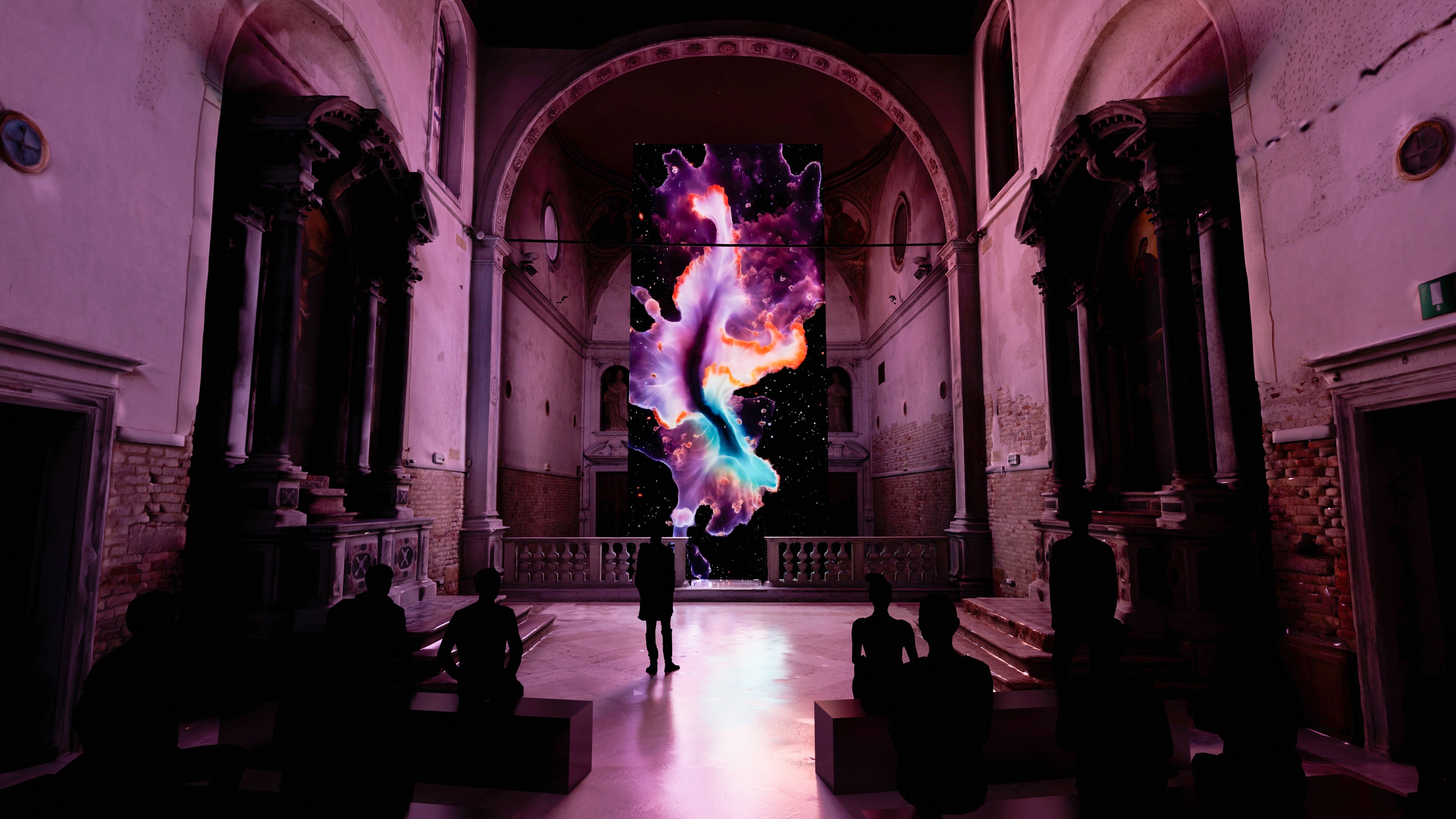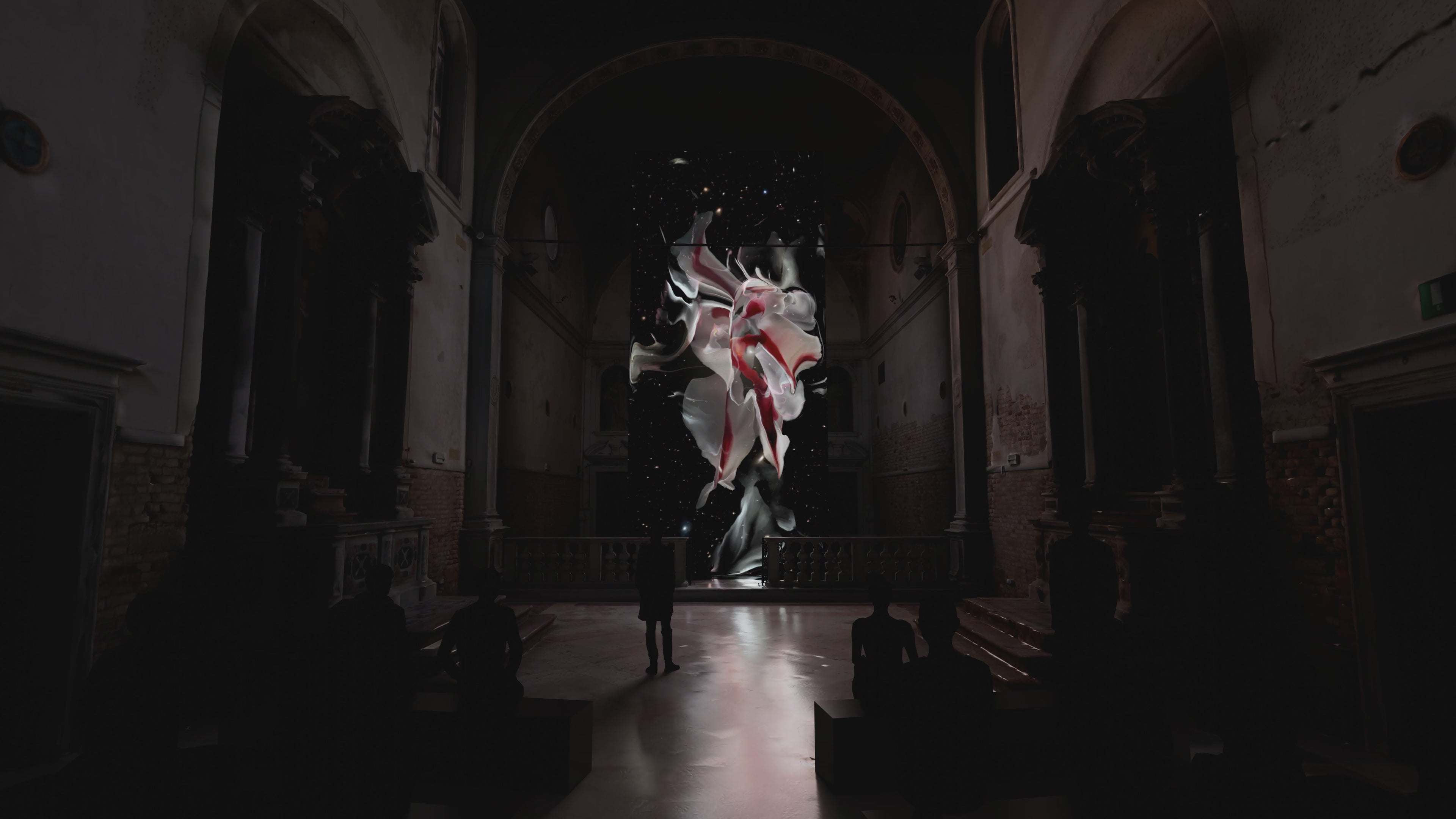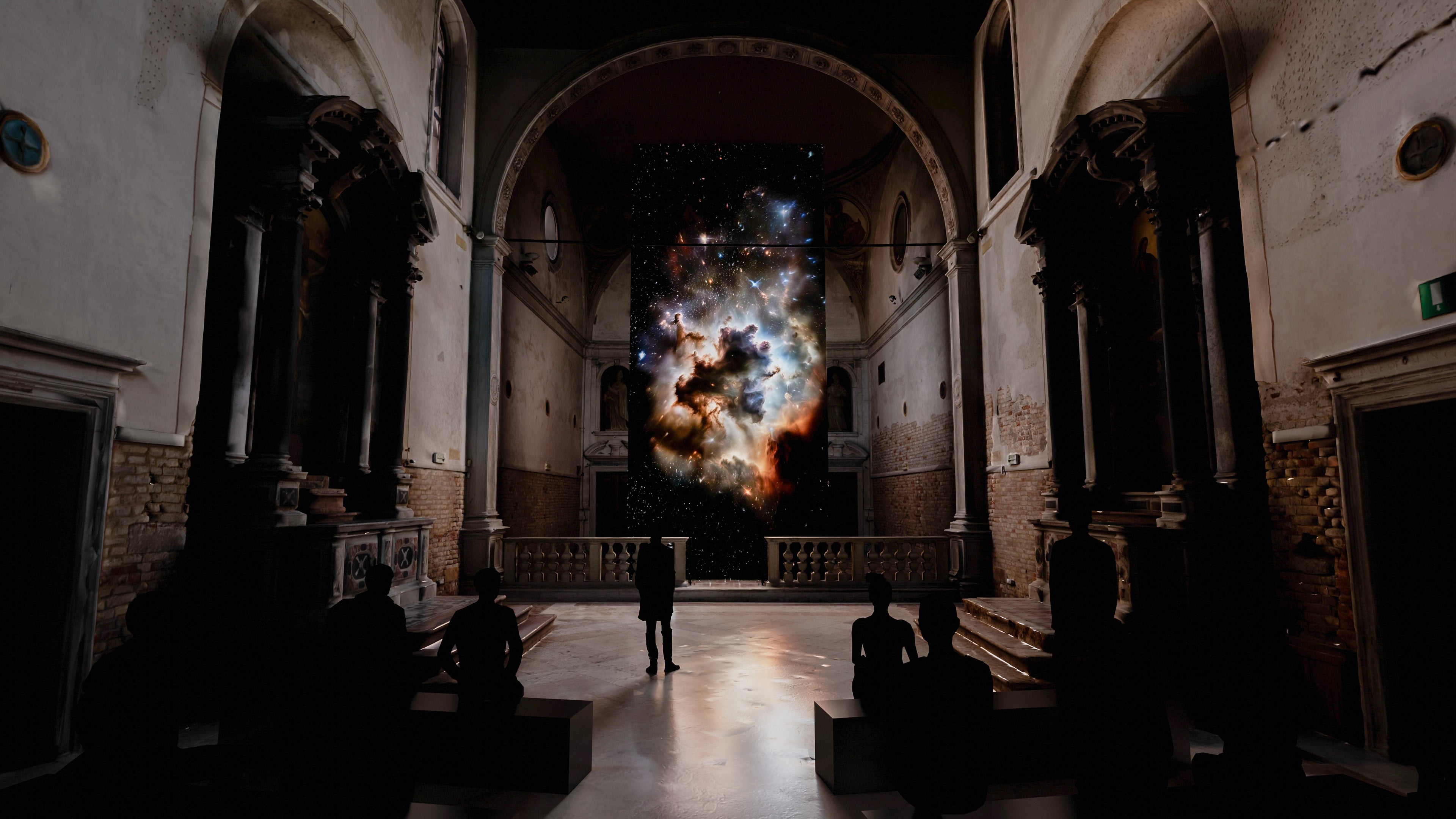- Play video
Boundaries, 2024
Video and sound installation
Choreography and dance, custom software, computer vision and motion tracking, fluid simulation, digital painting, artificial intelligence, machine learning, latent diffusion models.
Duration: 8 minutes, 15 seconds
Ed. 2/5 + 2 APs
About the Artwork
Boundaries is a monumental, contemplative artwork that explores the illusory nature of separation — between the self and other, body and environment, matter and mind. The work reflects on the deep interconnectedness of everything in the cosmos, from the microbial networks within our bodies to our atoms forged in dying ancient stars, to ripples in cosmic quantum fields. Boundaries are fictions. They are interfaces. We are not apart from the universe, we are not even in the universe. We are part of the universe. The universe is in us. Just as ‘waves’ are something that the ocean does, ‘we’ are something that the universe does. The piece is ultimately a celebration of life, of being alive, of being aware of being alive, and being aware of being aware. How is it that sub-atomic waves dancing in cosmic quantum fields can feel? Can think? Can be aware of itself feeling and thinking? Created using custom code, artificial intelligence, computer vision, digital painting, and dance, the work blends computational media with embodied expression, aiming to induce a contemplative, intimate experience, encouraging us to reflect on these themes.
Commissioned by the Vanhaerents Art Collection @vanhaerents_art_collection for the Venice Biennale 2024, curated by Walter Vanhaerents with support from Dominique Moulon @dominiquemoulon. Music composed by Rutger Zuydervelt @rutgerzuydervelt
Boundaries was commissioned as part of the 2024 Venice Art Biennale for the Chiesa di Santa Maria della Visitazione Church in Venice. It was exhibited as a 30 ft tall, 13 ft wide LED screen installation, exhibited throughout the biennale from April to November 2024, and visited by over 90,000 visitors.
The work was commissioned by, and later acquired by, the Vanhaerents Art Collection, a major collection focusing on contemporary art. The work was also exhibited at the historic old train station in Seoul, South Korea in November 2024, as the showpiece for the UnfoldX New Media Art festival, and will be shown at the File Festival in Sao Paulo and Rio, Brazil July-September 2025.
About Memo Akten & Katie Peyton Hofstadter
Memo Akten & Katie Peyton Hofstadter are Southern California based interdisciplinary artists, researchers, and collaborators whose work investigates the entanglements of technology, consciousness, embodiment, and culture. Merging backgrounds in dance, writing, poetry, drawing, sculpture, computer science, artificial intelligence, computational art, and public practice, they create speculative simulations, data dramatizations, immersive installations, and narrative experiments that probe the human condition in an age of artificial intelligence and accelerating transformation.
Memo Akten, originally from Istanbul, Turkey, is an artist, musician, and researcher whose practice bridges machine learning, consciousness, perception, and spirituality. A pioneer in artistic explorations of Deep Neural Networks, he holds a PhD in this topic from Goldsmiths, University of London, and is Assistant Professor at UC San Diego. His works have been exhibited worldwide, from the Shanghai Ming Contemporary Art Museum, to the Moscow Museum of Modern Art, to the Grand Palais in Paris, the Venice Biennale, and he is also a recipient of the Prix Ars Electronica Golden Nica.
Katie Peyton Hofstadter is a multidisciplinary artist, writer, and curator whose work investigates the complex relationships between embodiment, consciousness, and technologically mediated imagination. Her projects have been exhibited worldwide, and her writing appears in publications like Flash Art, BOMB, and The Bulletin of Atomic Scientists. She is co-founder of global public art campaigns such as the ARORA network and the Climate Clock in NYC.
Together, their collaborative research and practice explore how emerging technologies— particularly AI and data systems—interact with the embodied, emotional, and ecological dimensions of human experience.







